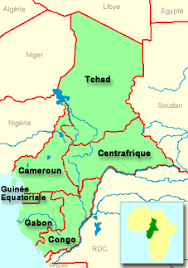CEMAC, 20 Years After!
By Godlove BAINKONG, Cameroon Tribune, 18-03-2014
The Central African Economic and Monetary Community (CEMAC) is
already 20 years old in its quest for real integration. Commemorative
activities are billed for March 16 in all the member countries of the
union.
Since the six-nation grouping was formed in 1994, much has been said about integration, decisions have been taken at national and regional levels and mutually beneficial policies put in place to effectively form a common bloc and face growing challenges. Be it the CEMAC passport, Air CEMAC or the free movement of goods and persons which was supposed to be effective from January 1, 2014, policies have been aplenty.
If there is one thing to show in the 20 years of integration within CEMAC, it is certainly its monetary policy spearheaded by the Bank of Central African States (BEAC). It has facilitated trade, minimized the uncertainty on exchange rate and regulated the banking sector of the sub-region to sustainably finance the economy. But the route is still long.
Integration, it is said, is a question of trade-off between sovereignty and regional concerns. And this is where the shoe pinches. The challenge remains getting the various countries to sacrifice a fraction of their sovereignty for the good of cooperation, especially in the world where everything is there to show that only stronger economic blocs have the susceptibility to survive.
Resource-wise, Central Africa appears to be the most blessed with natural resources but disturbingly the slowest when it concerns economic growth. At the end of 2013, economic growth rate in the sub-region stood at 2.6 per cent down from the earlier envisaged 4.1. According to a study carried out recently by the Foundation for Research and Studies on International Development (FERDI) in partnership with the CEMAC Commission and presented to stakeholders in a conference in Yaounde last month, little or no political will is to blame for snail-pace integration in the sub-region.
There is also the problem of finances to put in place infrastructure for the movement of goods and people. In real integration, countries could have a common economic policy wherein scarce resources are judiciously used to get required infrastructure. For instance, one or two state-of-the-art deep seaports, airports, railway lines and so on for a common use, had circulation been free.>>>
 If the sub-region boasts unique currency, other policies for real and mutually beneficial integration still blow in the wind.
If the sub-region boasts unique currency, other policies for real and mutually beneficial integration still blow in the wind.
The Central African Economic and Monetary Community (CEMAC) is
already 20 years old in its quest for real integration. Commemorative
activities are billed for March 16 in all the member countries of the
union.Since the six-nation grouping was formed in 1994, much has been said about integration, decisions have been taken at national and regional levels and mutually beneficial policies put in place to effectively form a common bloc and face growing challenges. Be it the CEMAC passport, Air CEMAC or the free movement of goods and persons which was supposed to be effective from January 1, 2014, policies have been aplenty.
If there is one thing to show in the 20 years of integration within CEMAC, it is certainly its monetary policy spearheaded by the Bank of Central African States (BEAC). It has facilitated trade, minimized the uncertainty on exchange rate and regulated the banking sector of the sub-region to sustainably finance the economy. But the route is still long.
Integration, it is said, is a question of trade-off between sovereignty and regional concerns. And this is where the shoe pinches. The challenge remains getting the various countries to sacrifice a fraction of their sovereignty for the good of cooperation, especially in the world where everything is there to show that only stronger economic blocs have the susceptibility to survive.
Resource-wise, Central Africa appears to be the most blessed with natural resources but disturbingly the slowest when it concerns economic growth. At the end of 2013, economic growth rate in the sub-region stood at 2.6 per cent down from the earlier envisaged 4.1. According to a study carried out recently by the Foundation for Research and Studies on International Development (FERDI) in partnership with the CEMAC Commission and presented to stakeholders in a conference in Yaounde last month, little or no political will is to blame for snail-pace integration in the sub-region.
There is also the problem of finances to put in place infrastructure for the movement of goods and people. In real integration, countries could have a common economic policy wherein scarce resources are judiciously used to get required infrastructure. For instance, one or two state-of-the-art deep seaports, airports, railway lines and so on for a common use, had circulation been free.>>>
Commentaires
Enregistrer un commentaire